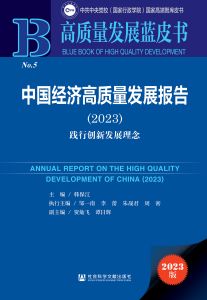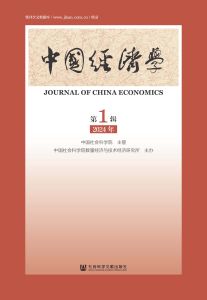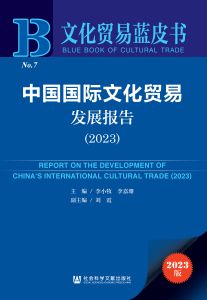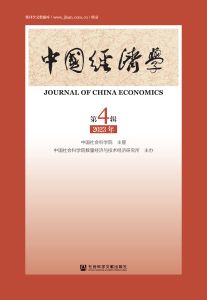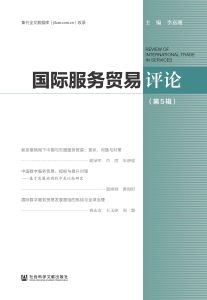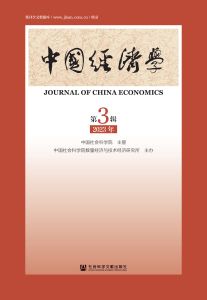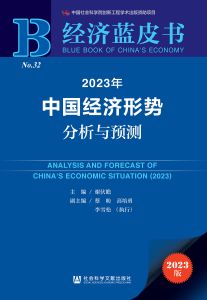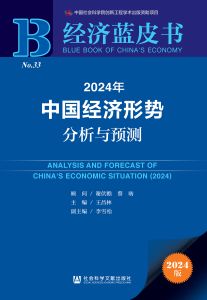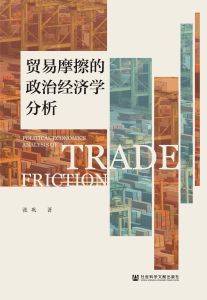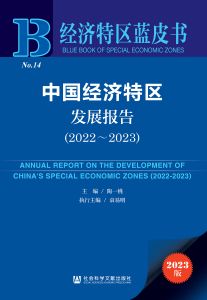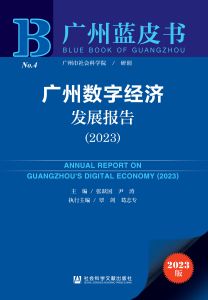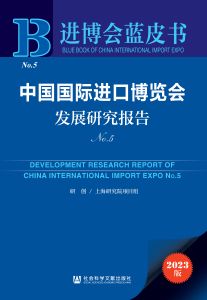首页 >
图书详情

图书简介
目录
参考文献
音频
视频
改革开放至今的三十年间,中国经济正在逐步走向绿色和可持续发展的道路,进而通过国际投资和贸易,对其他国家和地区的发展产生了潜移默化的影响。随着全球化不断深化,中国的经济已经与世界经济密不可分,中国的经济发展走向受到世界经济的影响,也在很大程度上影响着世界经济的发展。本书抓住了中国经济转型的契机,通过实地考察非洲和东南亚等过的中国国际投资和贸易活动,对中国经济发展带来的国际效应给出了深入的分析。
[展开]
-
第一章 投资、贸易与环境
-
一 研究背景
-
二 贸易环境
-
三 环境政策对投资和贸易的影响
-
附录 高、中、低能耗行业的划分
-
-
第二章 外商直接投资的环境和社会影响
-
一 引言
-
二 外商直接投资在中国的发展现状
-
三 中国的外商直接投资所带来的社会及环境影响
-
四 国际比较研究
-
五 案例研究
-
六 外商投资所面临的机遇与挑战
-
七 主要结论和政策建议
-
-
第三章 中国海外投资对东道国的环境和社会影响
-
一 中国对外投资的现状和趋势
-
二 中国海外投资的环境与社会影响
-
三 主要利益相关者在减少对外投资的社会和环境影响中的相关作用
-
四 中国投资积极贡献案例
-
五 主要结论
-
六 政策含义
-
-
第四章 中国参与国际规则制定促进环境保护
-
一 相关国际规则的发展
-
二 国际投资协定中的环境条款
-
三 国际贸易规则中的环境条款
-
四 气候变化与国际投资和贸易的关系及中国的参与
-
-
第五章 投资、贸易促进中国绿色转型
-
一 中国在世界经济格局中的地位
-
二 中国绿色转型的成效与目标
-
三 投资和贸易政策对中国绿色转型的影响
-
四 投资和贸易促进中国绿色转型的途径
-
五 通过投资和贸易政策调整促进中国绿色转型
-
-
第六章 案例研究与启示
-
一 国合会“投资、贸易与环境”课题组在印度尼西亚的调研报告
-
二 国合会“投资、贸易与环境”课题组在南非和赞比亚的调研报告
-
三 中非经贸合作的竞争与互补关系
-
四 中国海外投资与贸易的环境影响以及环境标准选择——以印尼为例
-
[1][1]Lenzen,M.,“Primary Energy and Greenhouse Gases Embodied in Australian Final Consumption:an Input-output Analysis,” Energy Policy ,1998.
[2][2]Machadog,Schaeffer,R.,Worrell,E.,“Energy and Carbon Embodied in the International Trade of Brazil:an Input-output Approach,” Ecological Economics ,2001.
[3][3]Mukhopadhyay,K.,Chakraborty,D.,“Environmental Impacts of Trade in India,” International Trade Journal ,2005.
[4][4]Fredrich,K.,David,R.,“Energy and Exports in China,” China Economic Review ,2008.
[5][5]Kondo,Y.,Moriguchi,Y.,Shimizu,H.,“CO2 Emissions in Japan:Influences of Import and Export,” Applied Energy ,1998.
[6][6]Peters,G.,Hertwich,E.,“Pollution Embodied in Trade:the Norwegian Case,” Energy Policy ,2006.
[7][7]Sanchez,C.,Duarte,R.,“CO2 Emission Embodied in International Trade:Evidence for Spain,” Energy Policy ,2004.
[8][8]Ahmad,N.,Wyckoff,A.,“Carbon Dioxide Emissions Embodied in International trade of Goods,” OECD STI Working Papers,2003.
[9][9]Rhee,H.,Chung,H.,“Change in CO2 Emission and Its Transmission between Korea and Japan Using International Input-out Analysis,” Ecological Economics ,2006.
[10][10]Weber,C.,“Measuring Structural Change and Energy Use:Decomposition of the US Economy from 1997 to 2002,” Energy Policy ,2009.
[11][11]Greening,L.et al.,“Comparison of Six Decomposition Methods:Application to Aggregate Energy Intensity for Manufacturing in 10 OECD Countries,” Energy Economics ,1997.
[12][12]Wang,C.,Chen,J.N.,Zou,J.,“Decomposition of Energy-related CO2 Emission in China:1957-2000,” Energy ,2005.
[13][13]Dietzenbacher,E.,“Structural Decomposition Techniques:Sense and Sensitivity,” Economic System Research ,1998.
[14][14]Seibel S.,“Decomposition Analysis of Carbon Dioxide Emission Changes in Germany:Conceptual Framework and Empirical Results,” http://epp.eurostat.ec.europa.eu/portal/page/portal/product_details/publication?p_product_code=ks-db-03-002,European Commission Working Papers and Studies,2003.
[15][15]吴晓蔚、朱法华、周道斌等:《2007年火电行业温室气体排放量估算》,《环境科学研究》2011年第8期。
[16][16]赵敏、张卫国、俞立中:《上海市能源消费碳排放分析》,《环境科学研究》2009年第8期。
[17][17]陈跃琴、李金龙:《21世纪源排放与大气CO2 体积分数预测》,《环境科学研究》2002年第2期。
[18][18]张友国:《中国贸易含碳量及其影响因素:基于(进口)非竞争型投入-产出表的分析》,《经济学》2010年第3期。
[19][19]沈利生:《我国对外贸易结构变化不利于节能降耗》,《管理世界》2007年第10期。
[20][20]朱启荣:《中国出口贸易活动中的能源消耗问题研究》,《统计研究》2011年第5期。
[21][21]李善同、何建武:《环境经济与政策(第一辑):中国对外贸易隐含的能源消耗和污染物排放的测算》,科学出版社,2010。
[22][22]Huston,A.,Environmental Supply Chain Hot Spots,2010.
[23][23]Grossman G.,Krueger A.,“Economic Growth and the Environment,” Quarterly Journal of Economic ,1995.
[24][24]Jaffer,“Environmental Regulations and International Competitiveness:What Does the Evidence Tell US?” Journal of Economic Literature ,1999.
[25][25]Kuznets,S.,“Economic Growth and Income Inequality,” American Economic Review ,1955.
[26][26]Markusen,J.R.,“Competition in Regional Environmental Policies When Plan Location are Endogenous,” Journal of Public Economics ,1995.
[27][27]Porter M.E.,“America’s Green Strategy,” Scientific American ,1991.
[28][28]Porter M.E.,Van Der Linde,“Toward a New Conception of the Environment-competitiveness Relationship,” Journal of Economics Prospect ,1995.
[29][29]World Bank,“Is Globalization Causing a Rase to the Bottom Environmental Standard?” PREM Economic Policy Group and Development Economics Group,2000.
[30][30]Xu,X.,“Do Stringent Environmental Regulations Reduce the International Competitiveness of Environmentally Sensitive Good?A Global Perspective,” World Development ,1999.
[31][31]包群、彭水军、赖明勇:《经济增长与环境污染》,中国经济学会年会论文,2006。
[32][32]曹光辉、汪锋、张宗益、邹畅:《我国经济增长与环境污染关系研究》,《中国人口、资源与环境》2006年第1期。
[33][33]陈艳莹:《污染治理的规模收益与环境库兹涅茨曲线——对环境库兹涅茨曲线成因的一种新解释》,《预测》2002年第5期。
[34][34]金奕:《我国利用外商直接投资的环境保护问题研究》,复旦大学硕士学位论文,2008。
[35][35]凌亢、王浣尘、刘涛:《城市经济发展与环境污染关系的统计研究——以南京市为例》,《统计研究》2001年第10期。
[36][36]王西琴、李芬:《天津市经济增长与环境污染水平关系》,《地理研究》2005年第6期。
[37][37]严复雷:《FDI与我国环境保护的关系研究》,西南财经大学硕士学位论文,2008。
[38][38]杨凯、叶茂、徐启新:《上海城市废弃物增长的环境库兹涅茨特征研究》,《地理研究》2003年第1期。
[39][39]杨英:《基于FDI的污染密集产业转移与环境福利效应研究》,浙江大学硕士学位论文,2005。
[40][40]赵晓莉、熊立奇:《FDI对东道国低碳经济发展的影响》,《国际经济合作》2010年第9期。
[41][41]Daniel H.Rosen and Thilo Hanemann,China’s Changing Outbound Foreign Direct Investment Profile:Drivers and Policy Implications,Policy Brief Number PB09-14,the Peterson Institute for International Economics,2009.
[42][42]德勤全球中国服务小组:《中国崛起:海外并购新领域》,德勤工作报告2009年11月。
[43][43]邵祥林:《“走出去”跨国经营——中国经贸强国之路》,中国经济出版社,2005。
[44][44]王玉梁:《中国:走出去》,中国财政经济出版社,2005。
[45][45]张建平:《政策性银行利用外汇储备转化资金支持“走出去”问题研究》,中国市场出版社,2010。
[46][46]赵伟:《中国企业“走出去”——政府政策取向与典型案例分析》,经济科学出版社,2004。
[47][47]Benjamin,J. Richardson,“Climate Change and Its Governance:Moving to A Low Carbon Economy Through Socially Responsible Financing?” Forthcoming in the International & Comparative Law Quarterly ,2009. Available at:http://ssrn.com/abstract=1335218.
[48][48]Boute,A.,“The Potential Contribution of International Investment Protection Law to Combat Climate Change,” Journal of Energy and Natural Resources Law ,2009. Available at SSRN:http://ssrn.com/abstract=1410587.
[49][49]Clapp,Jennifer,“Global Mechanisms for Greening TNCs:Inching Towards Corporate Accountability?” in Gallagher,K. P.(ed.). Handbook on Trade and the Environment :Edward Elgar Publishing,2009.
[50][50]Friends of the Earth(FOE),“A Dangerous Obsession:The Evidence against Carbon Trading and for Real Solutions to Avoid a Climate Crunch,” www.foe.co.uk/resource/reports/dangerous_obsession.pdf.,2009.
[51][51]Gros,Daniel,“A Border Tax to Protect the Global Environment?”,Center for European Policy Studies,Brussels. http://www.ceps.eu/book/border-tax-protect-global-environment,2009.
[52][52]Hepburn,J. and M.W.Gehring,“Sustainable Development in Regional Trade and Investment Agreements:Policy Innovations in Asia?”, CISDL Working Paper ,June 29,2007.
[53][53]Mabey,N.,McNally,R.,Foreign Direct Investment and the environment:From pollution havens to sustainable development :A WWF-UK Report,1998.
[54][54]Miles,K.,“International Investment Law and Climate Change:Issues in the Transition to a Low Carbon World,” Paper Presented at Inaugural Conference of the Society for International Economic Law :Geneva,2008.
[55][55]Marshall,F.,Cosbey,A.,Murphy,D.,“Climate Change and International Investment Agreements:Obstacles or Opportunities?” IISD Paper ,2010.
[56][56]Neumayer,E.,Greening Trade and Investment:Environmental Protection Without Protectionism . London:Earthscan,2001.
[57][57]OECD,OECD Investment Policy Reviews:China 2008:Encouraging Responsible Business Conduct . Paris:OECD Publications,2008.
[58][58]Pew Centre on Global Climate Change,“Strengthening International Climate Finance,” December 2010. http://www.pewclimate.org/.
[59][59]Tarasofsky,R. Linking Trade,“Investment and Climate Change Policies,” Chatham House Working Paper ,2007.
[60][60]Tienhaara,Kyla,“What You Dont Know Can Hurt You:Investor-State Disputes and the Protection of the Environment in Developing Countries,” Global Environmental Politics ,Volume 6,Number 4,November,2006.
[61][61]Tienhaara,Kyla,“Investment Institutions and Global Environmental Change,” Memo,2010.
[62][62]Tollefson,Chris and W.A.W. Neilson,“Investor Rights and Sustainable Development,” in Gallagher,K. P.(ed.),Handbook on Trade and the Environment :Edward Elgar Publishing,2009.
[63][63]UNCTAD,Trade and Development Report 2009. New York and Geneva:United Nations. 2009.
[64][64]UNCTAD,World Investment Report 2010:Investing in a Low-carbon Economy . New York and Geneva:United Nations. July,2010.
[65][65]UNFCCC,Investment and Financial Flows to Address Climate Change:an update. www.unfccc.int,2008.
[66][66]Waelde,Thomas and Abba Kolo,“Environmental Regulation,Investment Protection and ‘Regulatory Taking’ in International Law,” International & Comparative Law Quarterly ,2001.
[67][67]World Bank,International Trade and Climate Change:Economic,Legal and Institutional Perspectives . The World Bank,Washington,D.C.,2008.
[68][68]World Bank,World Development Report:Development and Climate Change . The World Bank,Washington,D.C.,2009.
[69][69]World Bank. “State and trends of the carbon market”,http://siteresources.worldbank.org/INTCARBONFINANCE/Resources/State_and_Trends_of_the_Carbon_Market_2010_low_res.pdf,2010.
[70][70]Zarsky,Lyuba. “Foreign Direct Investment and Sustainable Industrial Development,” in Gallagher,K. P.(ed.). Handbook on Trade and the Environment :Edward Elgar Publishing,2009.
[71][71]Zarsky,L.(ed.). International Investment for Sustainable Development:Balancing Rights and Rewards . London:Sterling,VA:Earthscan,2005.
[72][72]Zhang,Zhongxiang. “Is It Fair to Treat China as a Christmas Tree to Hang Everybody’s Complaints? Putting Its Own Energy Saving into Perspective”,Energy Economics ,2010.
[73][73]段茂盛:《清洁发展机制:发展现状与未来改革》,载《应对气候变化报告(2010):坎昆的挑战与中国的行动》,社会科学文献出版社,2010。
[74][74]张燕生、张建平:《区域贸易协定中的可持续发展问题》,载郭红燕、刘民权主编《环境与贸易》,科学出版社,2010。
[75][75]葛察忠、夏友富等编著《中国对外投资中的环境保护政策》,中国环境科学出版社,2010。
[76][76]季烨:《双边投资条约对发展权的负面影响及对策》,《武大国际法评论》2009年第1期。
[77][77]李丽平、胡涛、吴玉萍等:《构筑我国绿色贸易体系的对策研究》,《中国人口、资源与环境》2008年第2期。
[78][78]刘笋:《国际投资与环境保护的法律冲突与协调——以晚近区域性投资条约及相关案例为研究对象》,《现代法学》2006年第6期。
[79][79]龙凤、葛察忠、钟晓红等:《中国对外投资和援助中的环境保护》,《环境保护》2009年第4期。
[80][80]王艳冰:《〈能源宪章条约〉关于能源投资与环境保护关系的规定及其缺陷:与晚近投资协定比较》,《前沿》2010年第4期。
[81][81]魏卿:《从NAFTA和MAI的视角看投资协定中的环境规则》,《经济经纬》2005年第1期。
[82][82]谢来辉、陈迎:《碳泄漏问题评析》,《气候变化研究进展》2007年第4期。
[83][83]谢来辉、陈迎:《中国对碳关税问题过分担忧了吗?》,《国际经济评论》2010年第4期。
[84][84]张薇:《论国际投资协定中的环境规则及其演进:兼评析中国国际投资协定的变化及立法》,《国际商务研究》2010年第1期。
[85][85]朱工宇:《环境管制与投资保护的法律冲突与协调》,《天津行政学院学报》2010年第2期。
[展开]



